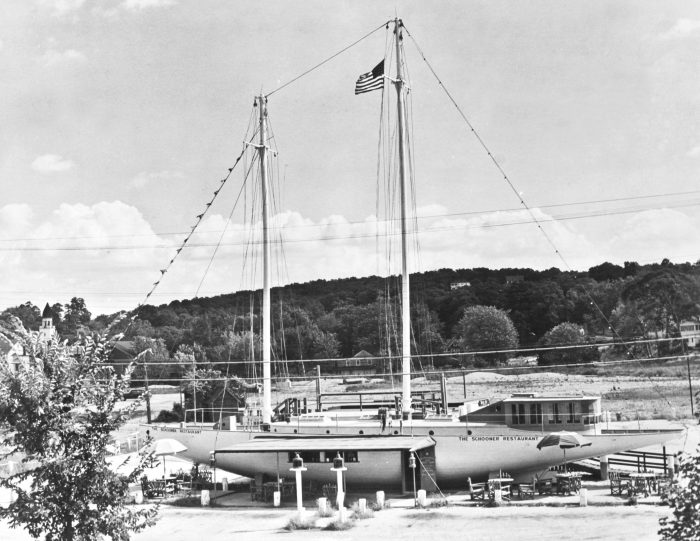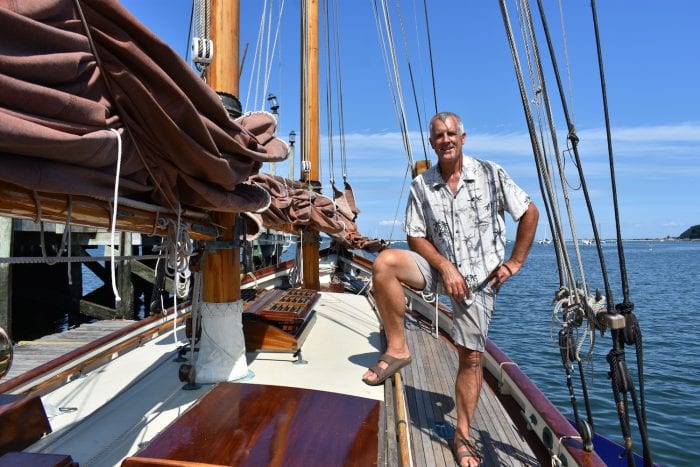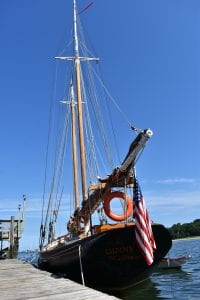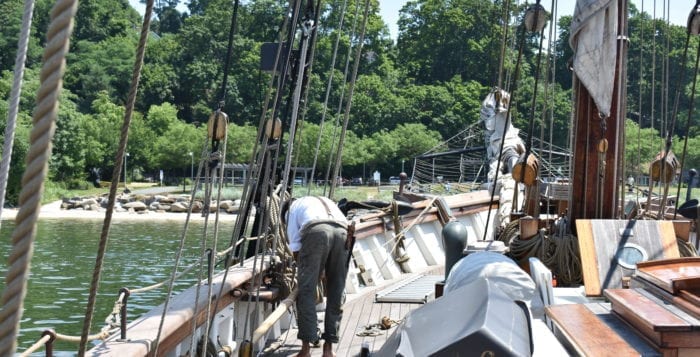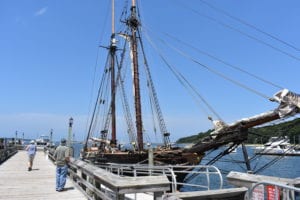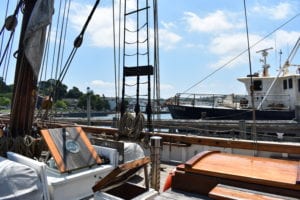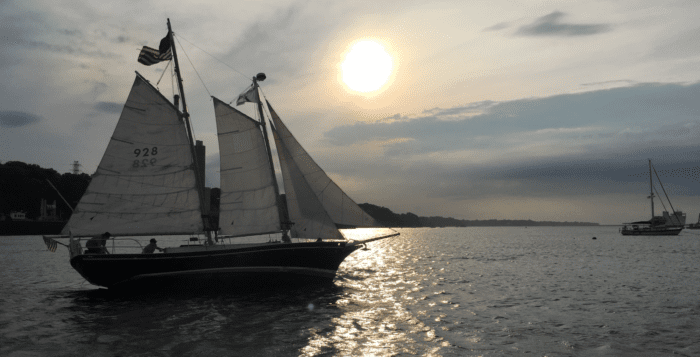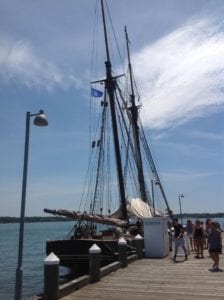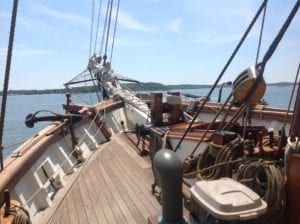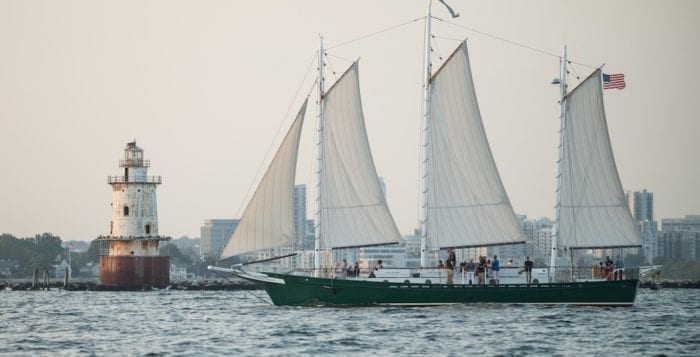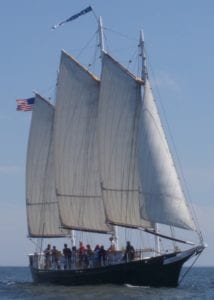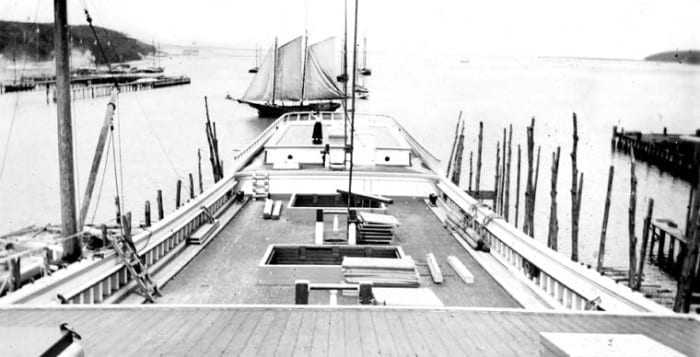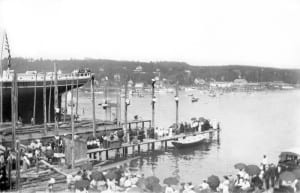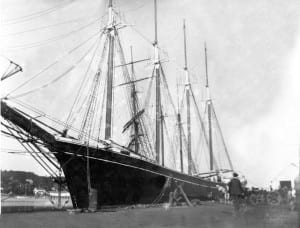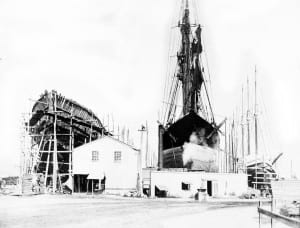By Kenneth Brady
The Schooner, once advertised as Long Island’s most novel restaurant, was a waterfront landmark in Port Jefferson from 1946 through 1968.
Located on the south side of West Broadway (Route 25A), the eatery was the brainchild of brothers Charles and Elmer Mapp who had found the schooner yacht Ilikamo languishing in a Riverhead, New York, boatyard.
Taken with the Ilikamo’s graceful lines, the Mapps purchased the 44-ton ship, which they had towed to the west side of Port Jefferson Harbor and brought ashore for remodeling.
Transformed into a distinctive restaurant, the Ilikamo was then moved to a site on West Broadway and placed on a concrete foundation.
Sitting on land, her days on the seas over, the Ilikamo had reached her final destination, but surprisingly the ship’s last voyage was not her first to Port Jefferson.
Built in 1899 at Rice Brothers in East Boothbay, Maine, the Ilikamo was formerly the yawl Regina. In 1901, the 61-foot Regina was converted into a schooner yacht at Port Jefferson’s Bayles Shipyard, just one of the pleasure craft’s many ties with the village.
Later renamed Sita and ultimately Ilikamo, the luxurious schooner yacht regularly visited Port Jefferson during the early twentieth century, often returning to Bayles Shipyard where she was hauled out for repairs and laid up for the winter.
Over the years, sailing under her different names, the ship cruised along the east coast of North America, never straying too far from Long Island’s waters.
By summer 1940, the Ilikamo was under the command of William J. Marshall of Greenport, anchored in Southold Bay and being used as a training ship for Sea Scouts, the maritime branch of the Boy Scouts.
Marshall enlisted in the Royal Canadian Naval Volunteer Reserve (RCNVR) before America’s entry into World War II and died of natural causes in 1944 while serving as a lieutenant. He was the Ilikamo’s last documented owner before the Mapps brought the ship to Port Jefferson.
Sensitive to the yacht’s rich and varied history, the Mapps were careful to preserve many of the craft’s original features while preparing the ship for its new life as a landlocked restaurant. With the yacht’s character intact, the Schooner opened on Oct. 26, 1946.
The entrance to the dining room, as well as a service counter for takeout, were located on the port side of the restaurant. The menu featured standard fare with the emphasis on short-order selections with nautical names, such as “Sea-Pups (small meatballs).”
Adding to its curb appeal, the sides of the Schooner were painted in gleaming white. Two masts towered over the restaurant; their “sails” outlined at night by strings of electric lights that could be seen by ships passing in Long Island Sound.
In 1949, the Mapps sold the Schooner to Rose Ceperano of Poquott, who over time made several changes at the eatery. Among the improvements, she expanded the menu, enlarged the kitchen, added a covered patio for outdoor dining and constructed small outbuildings on the grounds. Ceperano also closed the restaurant during the winter months, reopening in the spring.
Although she initially ran the Schooner as a family business, Ceperano subsequently leased the establishment. Called “Tom’s Schooner,” the eatery broadened its menu to include Italian cuisine.
Wer-Kay Realty Corporation purchased the Schooner from Ceperano in January 1968. After the eatery was razed that April, the New Schooner Restaurant was built on the cleared land. The site is now home to SāGhar Indian Fusion Restaurant.
Kenneth Brady has served as the Port Jefferson Village Historian and president of the Port Jefferson Conservancy, as well as on the boards of the Suffolk County Historical Society, Greater Port Jefferson Arts Council and Port Jefferson Historical Society. He is a longtime resident of Port Jefferson.

